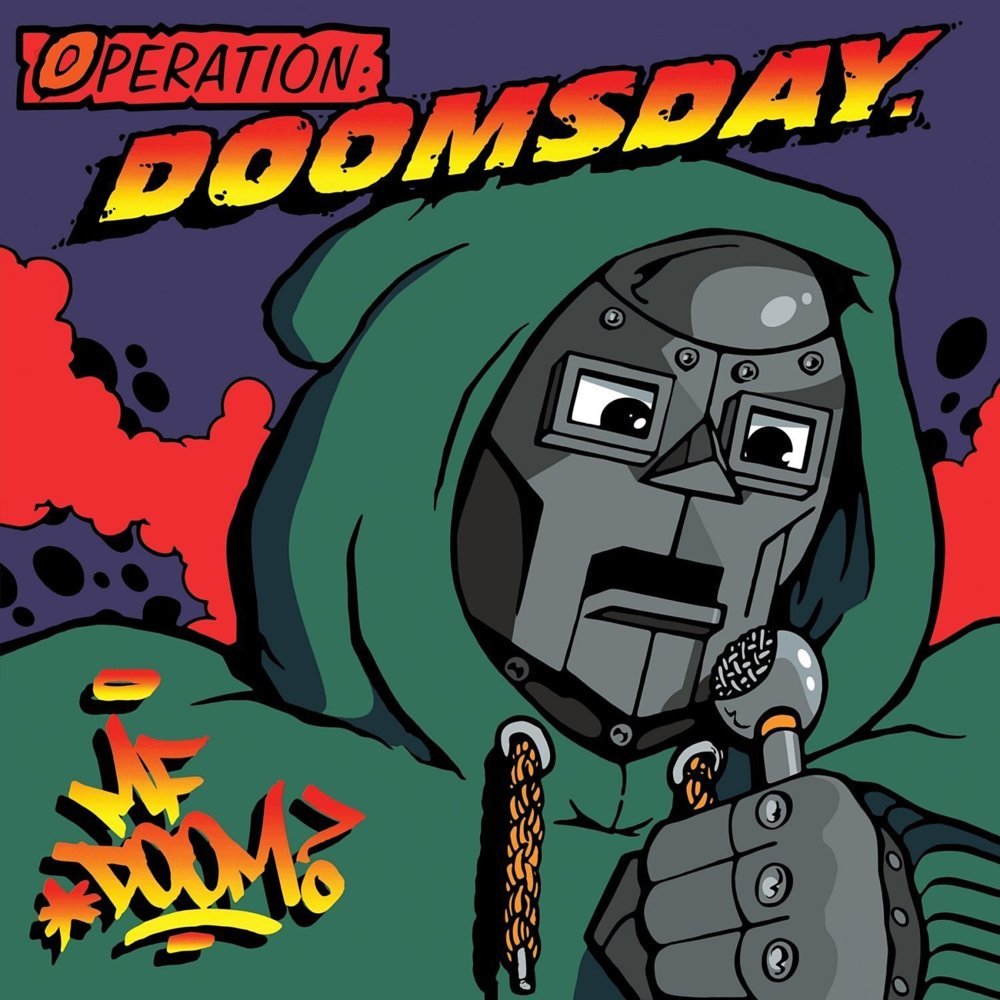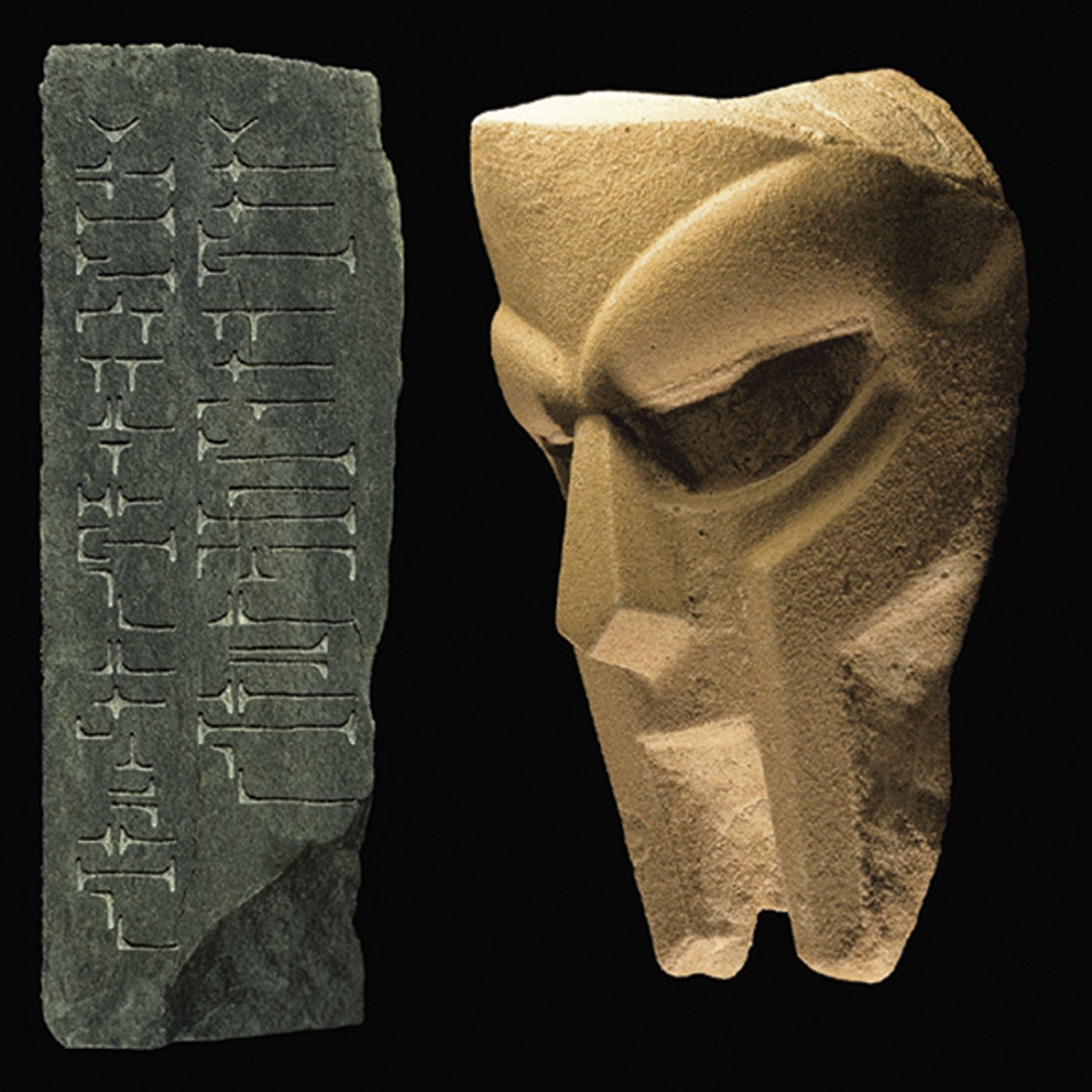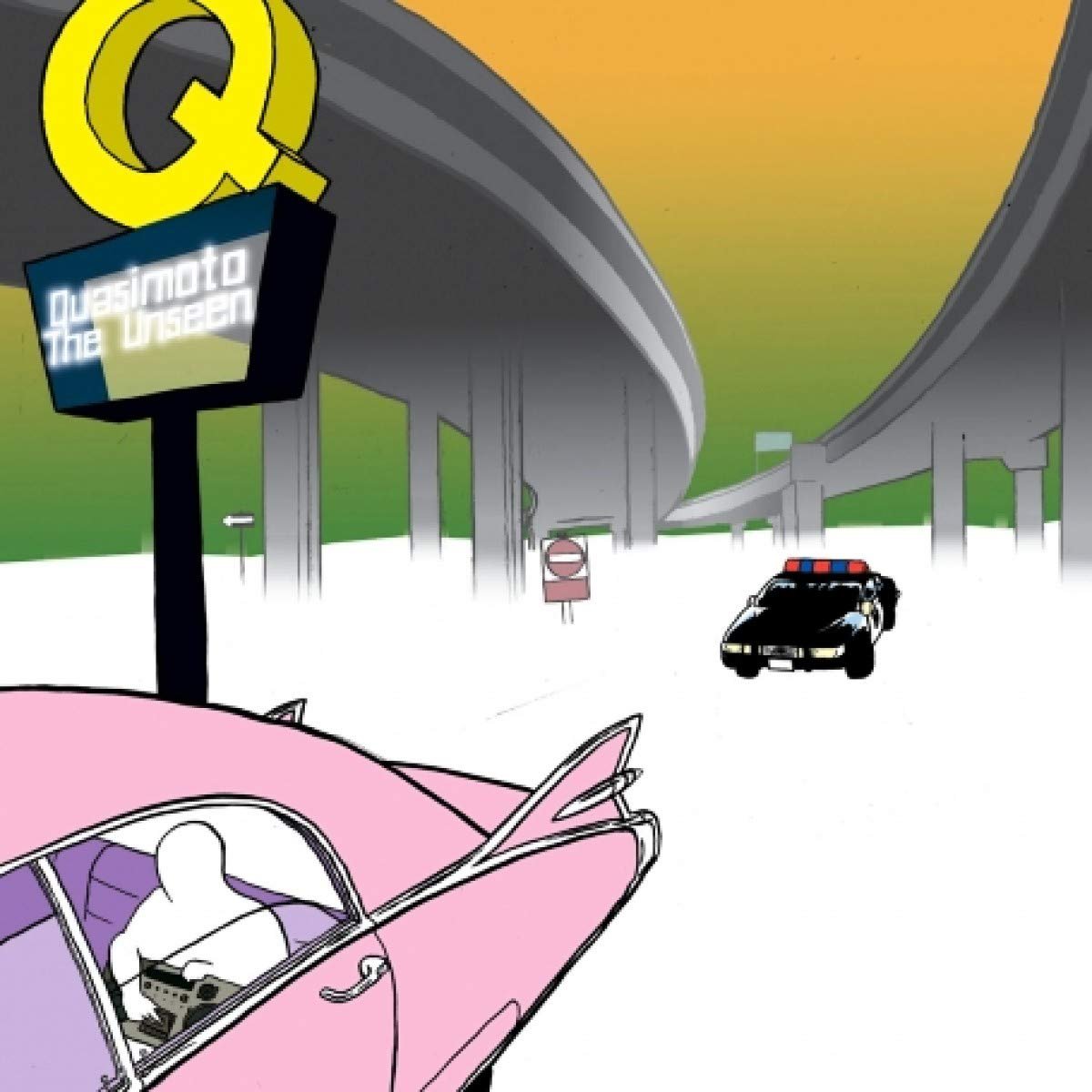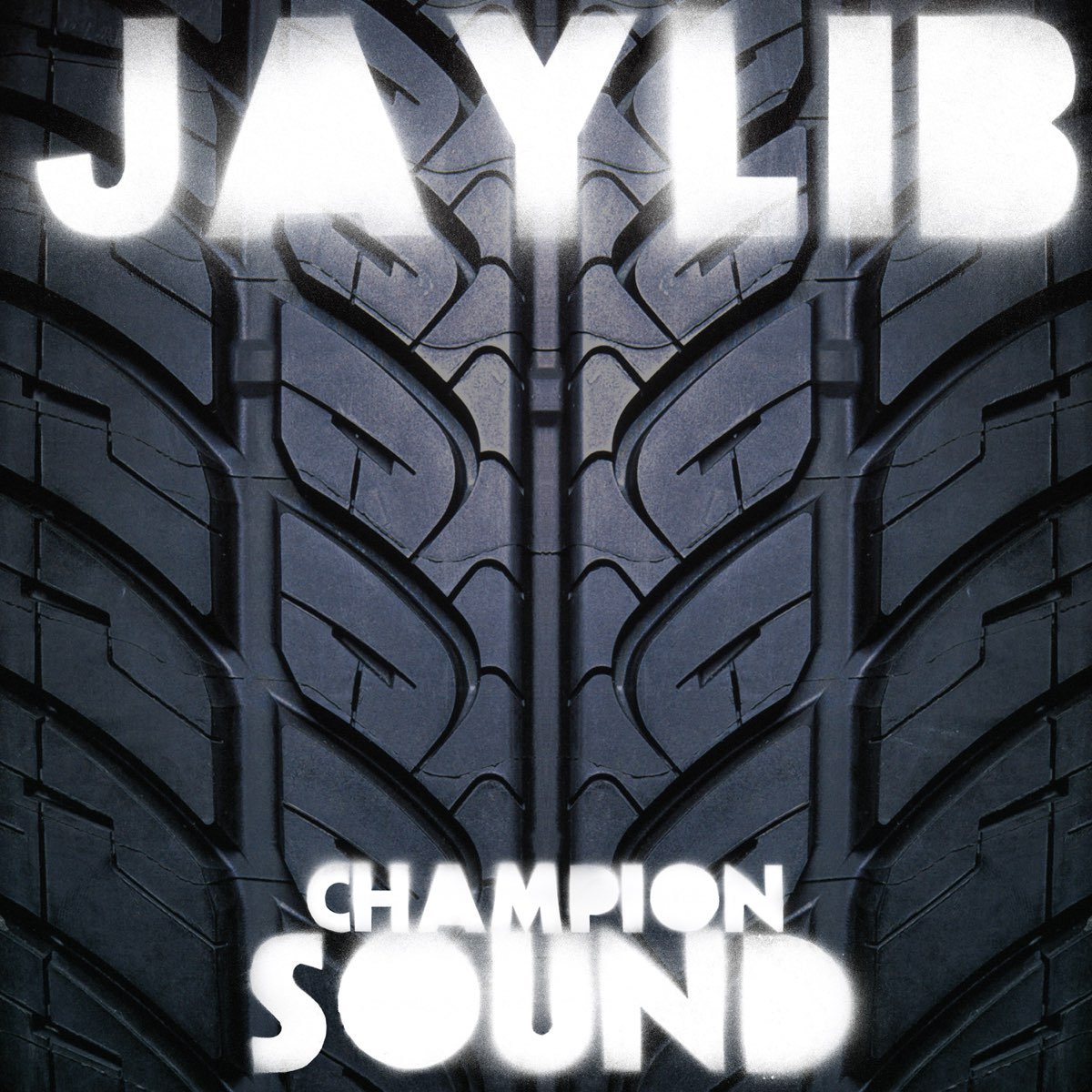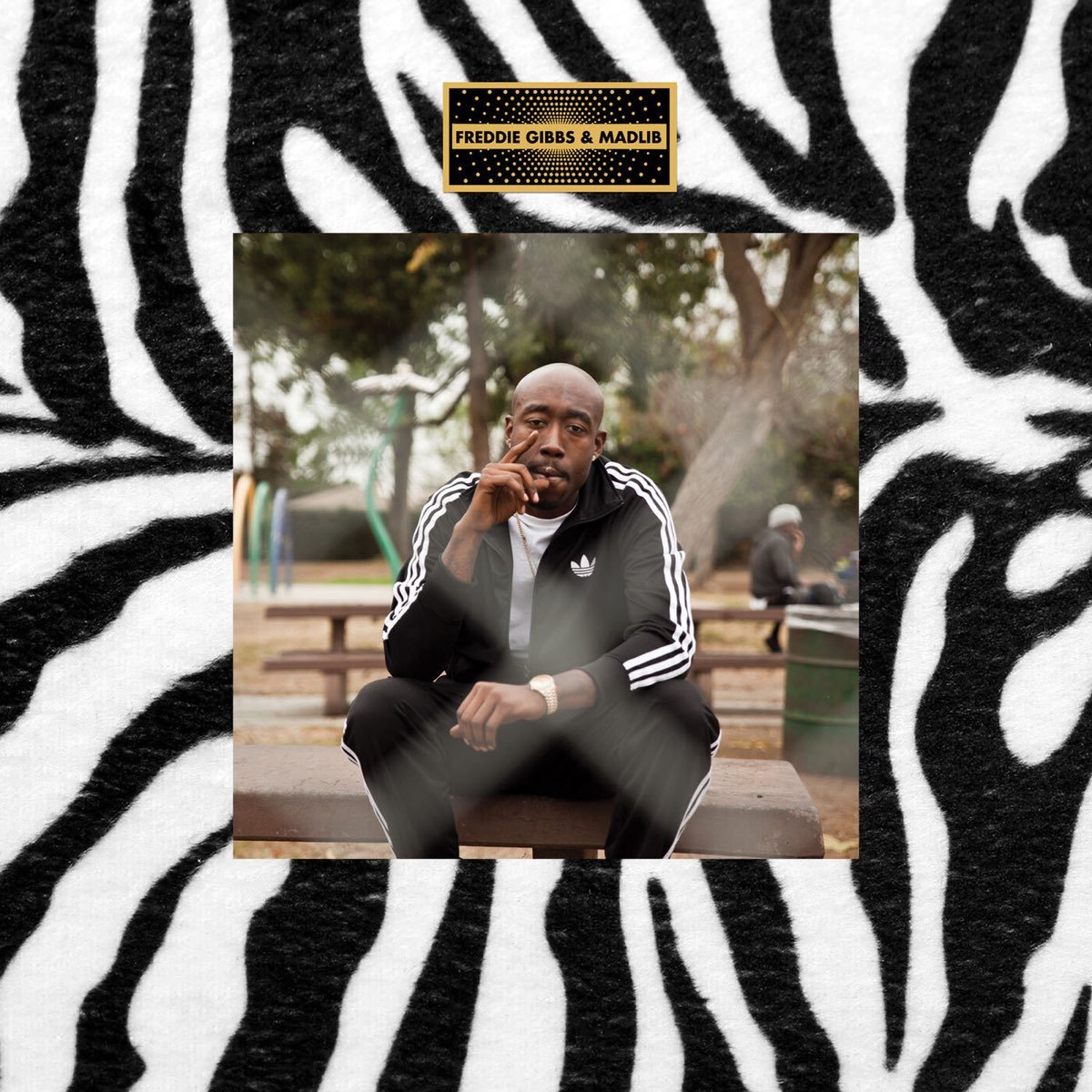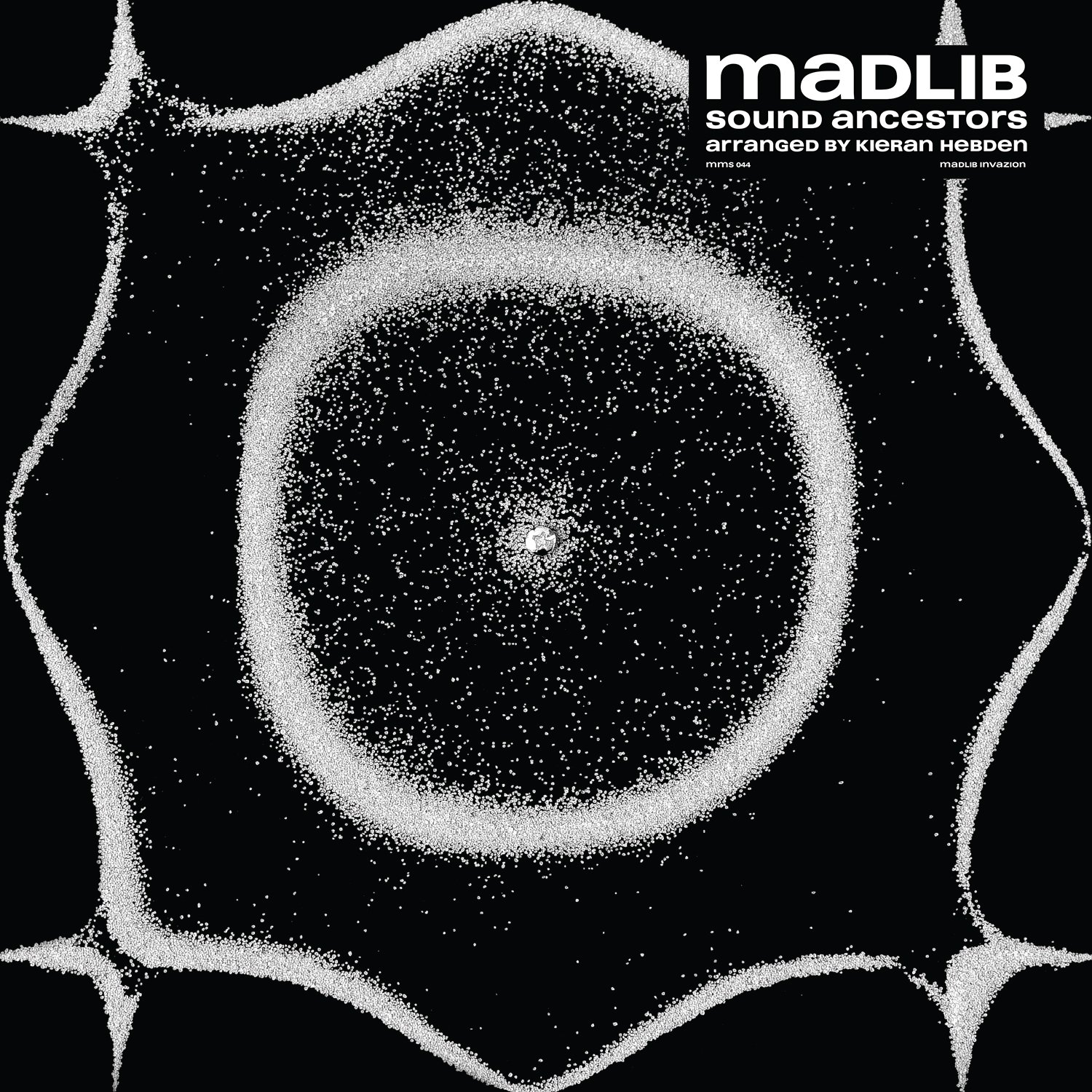Happy 20th Anniversary to Madvillain’s debut album Madvillainy, originally released March 23, 2004.
MF DOOM and Madlib are two of the most eclectic hip-hop artists ever. They’re both consummate rap “weirdos” and nerds with an edge, inscrutable in the way they interact with most of the hip-hop landscape. They’re also two of the most consistently dope hip-hop artists of the 21st century, creating mountains of diverse material that has captured the imagination of a broad hip-hop audience despite being completely uninterested in commercial success.
During the early to mid ’00s, the pair came together and through some strange alchemy, created Madvillainy. Released 20 years ago, it’s one of the greatest albums to be released during this century to date.
Daniel “MF DOOM” Dumile and Otis “Madlib” Jackson both already had storied musical careers before they released Madvillainy through Peanut Butter Wolf’s Stones Throw Records. DOOM, of course, was once a member of the group KMD, and starting with the release of Operation: Doomsday (1999), had become a favorite of the underground scene. Madlib got his start through the Likwit Crew, and was one-third of the group Lootpack, one of Stones Throw’s earliest signees. The two had built up loyal fanbases, for whom Madvillainy was the aural equivalent of mother’s milk.
Both DOOM and Madlib’s most beloved project, Madvillainy’s legacy manages to tower above the pair’s many seminal recordings. It endures though it’s about as thoroughly inaccessible as anything the duo has recorded. One emcee, one producer collaborations were beginning to come back in “style” a decade and a half ago, but this is one of the strongest of such pairings that’s ever been released.
DOOM and Madlib push all the right buttons on Madvillainy. DOOM’s rhymes are packed with obscure cartoon and pop-culture references, and his drunken-flow somehow always seems sharp. On the production end, Madlib crafts immaculate beats to complement DOOM, drawing from Brazilian jazz, psychedelic rock, easy listening, and ’80s R&B. The project has the sonic presence of a fever dream, but it’s never sloppy. On the contrary, not a hair on this entire album is out of place.
The creative partners recalibrated the way that they created music in ways that would not only shape their own careers, but also the careers of disciples to come. The album was extremely influential to artists like Tyler, The Creator and Earl Sweatshirt, among others. Earl’s Some Rap Songs (2019) closely follows the blueprint that Madvillainy laid out, as have many of his subsequent projects.
Since Operation: Doomsday, DOOM had been moving away from traditional hip-hop song structure, eschewing three 16-bar verses and delivering one and occasionally two lengthy verses. Madvillainy takes this approach to its logical conclusion, as DOOM and Madlib crafted a 22-track album the runs 46 minutes. The vast majority of the songs are barely over two minutes in length; only three last longer than three minutes. In most cases, DOOM says everything he needs to say in a single verse and then moves on. The album is almost completely devoid of hooks, which was thought to be ill-advised at the time of Madvillainy’s recording, during a period where a hook could “make” a song.
Listen to the Album:
DOOM and Madlib came together to create Madvillainy after Madlib told the Los Angeles Times in 2002 that he wanted to work with DOOM (and J Dilla). After DOOM journeyed out to Los Angeles, the two began to furiously record music over the next few months in Madlib’s Bomb Shelter studio, consuming mass amounts of liquor, weed, Thai food, and hallucinogenic mushrooms. They continued to record tracks, eventually reaching a level of comfort in the studio where the two didn’t even have to communicate with each other verbally. Then they got to the point where they didn’t even see each other that much during the recording process, with the two working independently. Madlib would burn DOOM a CD with 50 completed beats on it, DOOM would record rhymes over those he liked, and then Madlib would give him another 50-beat CD.
At some point during the process, Madlib headed to Brazil with Egon, Cut Chemist, and J.Rocc to attend a Red Bull Music Academy Event. While there, Madlib went crate digging, discovering a wealth of raw material to transform into beats. While in his hotel room, he apparently recorded hundreds of beats, many of which ended up on Madvillainy.
Even after this work, it’s amazing how close Madvillainy came to not even happening at all. While in Brazil, someone lifted a cassette containing a nearly completed demo of the project, then promptly leaked it onto the Internet, more than a full year before Madvillainy was eventually to be released. This happened a few years before album leaks became commonplace, and neither Stones Throw nor everyone else associated with the project knew how to deal with it. Reportedly both Madlib and DOOM temporarily decided to move on from the album, refocusing on other efforts.
Ultimately, the two came back together to finish what they’d begun. DOOM re-recorded all of his verses, and according to PB Wolf, switched up his delivery and stylistic expression. Madlib replaced and re-tooled some of his beats, and the pair recorded a few more songs. And the rest became history.
Madvillainy is filled with oddly inspired moments of the type few other artists would ever attempt. For example, barely 30 seconds into the hectic “Money Folder,” DOOM stops the song, breaking into an interlude featuring Madlib flipping “an old jazz standard.” Not exactly the type of thing you’d expect to hear on an album’s first single.
In general, Madvillainy is at its best when it sounds like nothing that was out of the time. “Accordion,” the album’s opening track, begins things on a surreal note, as DOOM rhymes over an accordion loop from Daedelus’ “Experience.” In 2013, DOOM told XXL that “Accordion” was one of the first beats that he heard while recording the project, and wrote the verse almost as a freestyle, recording his first thoughts on paper and then recording them as is.
The far too brief “Curls” sounds like the soundtrack to a demented carnival, with its warbling guitars and mutated steel drums. With his verse DOOM strikes a balance between whimsy and poignancy, as he describes his hardscrabble upbringing with his brother and mother.
Watch the Official Videos:
Madlib’s production often lends an air of mystery to the project, keeping the sound understated. With “Meat Grinder,” DOOM delivers sinister vocals per a subtle bassline and a Hawaiian guitar sample, ending the song with the tongue-twisting couplet, “The van screeches, the old man preaches about the gold sand beaches / The cold hand reaches for the old tan Ellesse’s … Jesus.”
“Figaro” is my personal favorite entry on Madvillainy, as Madlib pairs the album’s crispiest drums with a watery, muffled guitar sample. DOOM a.k.a. “the best emcee with no chain ya ever heard,” lyrically dances across the track, putting together complicated rhyme schemes and flows. He raps, “Off pride, tykes talk wide through scar meat /Off-sides, like how Worf rides with Starfleet.” DOOM ends his first verse unexpectedly, giving the song a somewhat unfinished feel that adds to its charm.
Some tracks on the album do sound like they could have been lifted from Operation: Doomsday or Take Me To Your Leader (2003), with Madlib hewing closely to DOOM’s own production aesthetic. Most notable is “All Caps,” the album’s second single, where Madlib cobbles together pieces of the opening credits of Ironside and the score from an episode of The Streets of San Francisco to create trundling jazzy funk. Another example is the fun and goofy “Operation Lifesaver aka Mint Test,” where DOOM’s struggles while interacting with an attractive woman with bad breath, grasping for ways to subtly slip her the nominal mint Lifesaver. Here Madlib samples George Duke’s “Prepare Yourself,” splicing in vocals from a “Justice League of America” record.
Other songs on Madvillainy are conceptually brilliant. DOOM re-assumes his character of Viktor Vaughn on “Fancy Clown.” In between vocal samples from ZZ Hill’s “That Ain’t the Way to Make Love,” the young and brash Viktor rails against his girlfriend, who’s been cheating on him with…MF DOOM? “Don’t make me have to pound his tin crown face in,” Viktor warns, “And risk being jammed up like traffic, inbound from spacing.” After confessing his own infidelities, Viktor issues one final missive, declaring “Ain’t enough room in this fucking town / When you see tin head tell him be ducking down / I’m not romping around, he better be / Ready and prepared to be stomped in the ground.”
DOOM uses many unconventionally conceived Madlib beats for Madvillainy. DOOM offers some rare political commentary on “Strange Ways,” as he first explores police corruption and brutality, then ponders the complicated and tragic situation in the Middle East. Like “Fancy Clown,” he fashions his schemes around the sampled vocals that appear throughout the song, making it sound like a strange duet.
With “Great Day Today,” DOOM decides to rap over Madlib’s jazz-fusion cover of a Stevie Wonder’s “How Can You Believe?” In the early ’00s, Madlib had created the Yesterday’s New Quintet project, his “alias” to record and release straight jazz records. About a month or so after Madvillainy dropped, Stones Throw would release Stevie, an album full of Madlib’s take on Stevie Wonder songs. DOOM uses the “How Can You Believe” cover (which didn’t make the album) as the sonic backdrop for one of his best lyrical performances on the album. “Looky here, it's just the way the cookie tear,” he raps. “Prepare to get hurt and mangled like Kurt Angle rookie year.” The track also includes one of DOOM’s most evocative lines, as he describes writing his rhymes “in cold blood with a toothpick.”
Enjoying this article? Click/tap on the album covers to explore more about MF DOOM:
DOOM shares the mic duties with Lootpack-affiliate M.E.D. on “Raid,” rhyming over a soundscape that mixes straight-ahead jazz with quirky Brazilian pop. DOOM sounds inspired even as he’s laid back, rapping, “Ahh, what do he know / About the buttery flow? He need to cut the ego / Tripping, to date the Metal Fellow been ripping flows / Since New York plates was ghetto yellow / With broke blue writing, this is too exciting / Folks leave out the show feeling truly enlightened.”
“America’s Most Blunted” is the most conventionally structured and executed track on Madvillainy, featuring DOOM rhyming with both Madlib and his alien aardvark alter ego, Quasimoto. The two (or “three”) extol the virtues of good weed over a muffled sample of Fever Tree’s version of “Ninety-Nine and One Half.” It’s one of the few songs that could have comfortably appeared on another DOOM or Madlib-fronted project.
It’s often overlooked that DOOM is absent during whole chunks of Madvillainy, and the tracks where he’s missing run from the bustlingly bizarre to the album at its most straightahead. “Shadows of Tomorrow” falls into the former category, an ode to jazz titan Sun-Ra, one of Madlib's biggest influences. Madlib and Quasimoto wax philosophic over a swirling track lifted from an Indian film soundtrack. Meanwhile, “Eye” is one of the best-produced songs on the album. Madlib transforms a loop from a mid-1980s track by the Whispers into a shimmering, soaring, soulful ode to love sung by longtime DOOM associate Stacey Epps.
“Rhinestone Cowboy” is reportedly the product of the re-recording sessions for the project. While putting the album together, everyone involved noticed that the earlier version of Madvillainy didn’t have a proper ending. Thus, DOOM selected a Madlib beat that was the product of the marathon Brazil production sessions and recorded an album-closing track for the ages. “Rhinestone Cowboy” is one of the greatest album-ending songs of the past 20 or so years. Its piercing, soaring strings lend it an epic feel, as DOOM seemingly holds command of an enraptured audience. It’s one of the few songs where the Metal Faced Villain kicks full verses, as he delivers some of his best stream of consciousness rhymes, adding a definitive exclamation point to the project. After first professing to “have more soul than a sock with a hole,” he brags, “Villain – his smile stuns ya chick / While he put himself in your shoes, run ya kicks.”
A proper sequel to Madvillainy had been nearly 15 years in the making. In 2008, Stones Throw released Madvillainy 2, which was a remixed version of Madvillainy. In 2009, The New Yorker ran a profile on DOOM that followed him in Los Angeles as he recorded vocals for a follow-up to the project.
And, of course, much of this becomes moot with DOOM’s tragic passing towards the end of 2020. Any “vaulted” DOOM material is under the control of his family and estate. There have been a good share of posthumous DOOM releases, but the estate is very protective with the legacy of the Metal-Faced Villain. After DOOM’s death, PB Wolf revealed that he had seven to ten finished tracks intended for Madvillainy 2, but suggest that in some cases, DOOM had re-used the verses for other projects. And this doesn’t even get into negotiating the label politics that could be involved in releasing the follow-up.
Enjoying this article? Click/tap on the album covers to explore more about Madlib:
Some of DOOM and Madlib’s fans continue to hold out hope for a posthumous follow-up to Madvillainy because this album seemed like the beginning of a long-lasting partnership. It never came across as “lightning in a bottle” or some sort of one-time exercise. The pair’s chemistry seemed to lend itself to a long and fruitful partnership.
Yes, it’s a shame that a fully realized sequel never materialized. Or a third installment after that one. But we as listeners are lucky to have received one timeless, enduring masterpiece of a project from this pair of musical geniuses. One still shines so brightly and is still a source of inspiration to new generations of emcees. Even though the Hip-Hop Rhinestone Cowboys may never ride together again, brilliance like Madvillainy doesn’t come around very often. So we should continue to celebrate what we were blessed to receive two decades ago.
LISTEN:
Editor's note: this anniversary tribute was originally published in 2019 and has since been edited for accuracy and timeliness.


